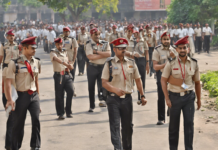Introduction
Nestled in the lap of the Himalayas, Kashmir is a paradise on earth renowned for its stunning landscapes, serene lakes, and vibrant cultural heritage. The weather in Kashmir plays a vital role in shaping the experiences of visitors throughout the year. From the lush greenery of summer to the snow-covered valleys of winter, each season in Kashmir offers a unique charm and beauty. In this comprehensive guide, we delve into the diverse weather patterns of Kashmir, providing insights into the best time to visit, what to expect in each season, and tips for making the most of your trip.
Understanding the Seasons
Spring
Spring in Kashmir, spanning from March to May, marks the bloom of colorful flowers, including the famous tulips of the Indira Gandhi Memorial Tulip Garden in Srinagar. Temperature wise, this period is mild and pleasant, making it an ideal time for sightseeing and outdoor activities. Light showers are common, adding to the magical ambiance of the valley.
Summer
June to August brings the summer season to Kashmir, offering warm days and cool nights. This period sees an influx of tourists seeking respite from the scorching heat of the plains. The Dal Lake and Nigeen Lake in Srinagar become popular destinations for houseboat stays and shikara rides. The higher reaches such as Gulmarg and Sonamarg offer a refreshing escape with their pleasant weather and opportunities for trekking and other adventure sports.
Autumn
September to November paints Kashmir in hues of golden as the Chinar trees shed their leaves, creating a picturesque setting. The weather begins to cool, and the valley is bathed in mild sunlight, making it ideal for exploring the gardens, orchards, and historic sites with fewer crowds.
Winter
December to February transforms Kashmir into a winter wonderland with heavy snowfall blanketing the entire region. The famous Gulmarg becomes a paradise for skiing enthusiasts, while places like Pahalgam offer a serene snowy retreat. The sub-zero temperatures add a magical touch to the landscape, making it perfect for those seeking a snowy adventure.
Monsoon
Although not as pronounced as in other parts of India, Kashmir experiences monsoon showers from July to September. While these rains may disrupt outdoor activities, they add to the beauty of the valley, especially the Pahalgam region. Exploring the lush green meadows and glistening lakes under the monsoon skies can be a unique experience for visitors.
Best Time to Visit
The best time to visit Kashmir largely depends on one’s preferences. Summer (June to August) is the peak tourist season, offering pleasant weather and vibrant landscapes. Spring (March to May) and autumn (September to November) are ideal for those seeking a balance between crowd control and favorable weather conditions. Winter (December to February) is perfect for snow enthusiasts and those looking to experience a snowy paradise.
Tips for Travelers
- Dress in Layers: The weather in Kashmir can vary throughout the day, so it’s advisable to dress in layers to adapt to changing temperatures.
- Stay Informed: Keep track of the weather forecast, especially during winter, to avoid any travel disruptions due to heavy snowfall.
- Plan Ahead: Make reservations in advance, especially during peak tourist seasons, to ensure accommodation and transportation availability.
- Stay Hydrated: Despite the cool weather, it’s essential to stay hydrated, especially at higher altitudes.
- Respect Local Customs: Embrace the local culture and traditions, and dress modestly, particularly when visiting religious sites.
Frequently Asked Questions (FAQs)
- Is Kashmir safe to visit?
-
Yes, Kashmir is generally safe for tourists. However, it’s recommended to stay informed about the current situation and follow travel advisories.
-
What should I pack for a trip to Kashmir?
-
Pack warm clothing, especially during winter, comfortable shoes for walking, sunscreen, sunglasses, and any necessary medications.
-
Can I witness snowfall in Kashmir?
-
Yes, Kashmir experiences heavy snowfall during winter, providing visitors with a magical snowy landscape.
-
Are there any precautions to take against altitude sickness?
-
While Kashmir’s main tourist destinations are not at very high altitudes, it’s advisable to stay hydrated, avoid strenuous activities upon arrival, and consult a doctor if you have any concerns.
-
Is it necessary to hire a guide for exploring Kashmir?
-
Hiring a guide can enhance your experience in Kashmir by providing insights into the local culture and history. However, it’s not mandatory, and many tourists choose to explore independently.
-
Are there any festivals or events worth attending in Kashmir?
-
Yes, Kashmir hosts various cultural events and festivals throughout the year, such as the Tulip Festival in spring and the Shikara Festival on Dal Lake.
-
Can I visit Kashmir for adventure sports activities?
-
Yes, Kashmir offers a range of adventure sports opportunities, including skiing in Gulmarg, trekking in Sonamarg, and river rafting in Pahalgam during the summer months.
-
What is the cuisine like in Kashmir?
-
Kashmiri cuisine is renowned for its flavorful dishes such as Rogan Josh, Yakhni, and Kashmiri Pulao. Don’t miss trying these traditional delicacies during your visit.
-
How are the transportation options in Kashmir?
-
Kashmir has a well-connected network of roads, and public transport such as buses and shared taxis are readily available. Private cars and taxis can also be hired for more convenience.
-
What are the must-visit attractions in Kashmir?
- Some must-visit attractions in Kashmir include the Mughal Gardens in Srinagar, Gulmarg Gondola, Betaab Valley in Pahalgam, and the floating market on Dal Lake.
In conclusion, the weather in Kashmir plays a pivotal role in shaping the experiences of visitors to this enchanting region. Whether you’re seeking a summer retreat amidst blooming gardens or a winter adventure in a snowy wonderland, Kashmir offers something for every traveler. By understanding the seasonal nuances and planning your trip accordingly, you can truly savor the beauty and tranquility of this Himalayan paradise.















